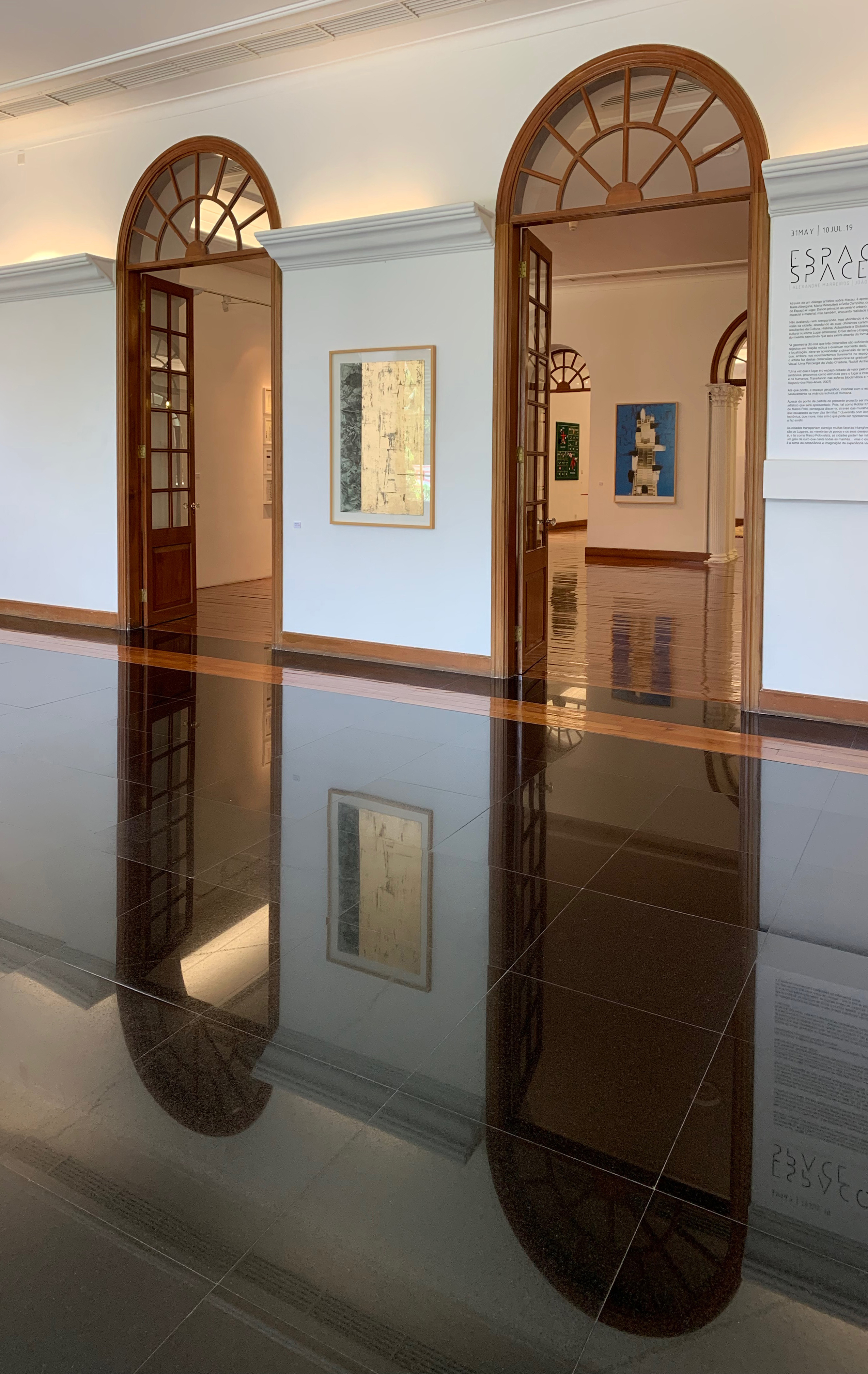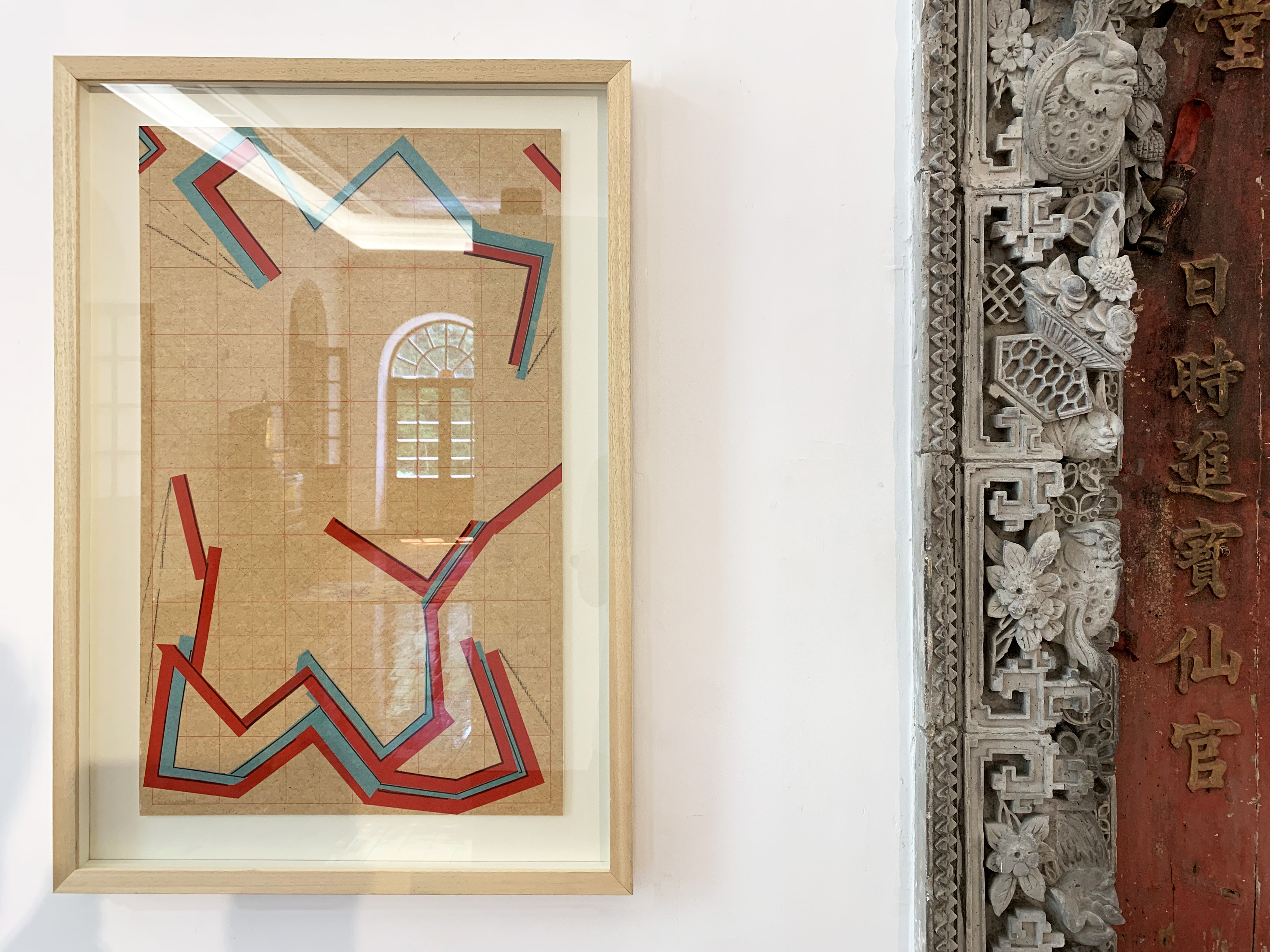Space and Place
2019
![]()
| Alexandre Marreiros | João Palla | Maria Albergaria | Maria Mesquitela | Sofia Campilho |
This exhibition presents itself as an artistic dialogue about Macau. The work of Alexandre Marreiros, João Palha, Maria Albergaria, Maria Mesquitela and Sofia Campilho is presented through spatial visual interpretation and surveying of Space and Place. The body of work not only observes the existing urban scenery, where architecture becomes spatially and materially tangible, but also acknowledges its previous realities, perceptions and experiences.
![]()
"Since a place is the space endowed with value by man, and it is contemplated in that, in physical and/or symbolic presence, we propose as a structure for the place the intersection of three worlds, or attributes: the spatial, the environmental and the humans. The time element is transiting in the bioclimatic and human spheres.”
(in Luiz Augusto Dos Reis Alves, The Concept of Place, 2007)
To what extent, geographical space interferes with geometric space, and how does this relation interfere actively or passively in the individual human experience.
![]() Although the starting point of the exhibition is very tangible, the real driving force lies in the artistic result that will be presented. As Koblai Khan states “only in Marco Polo's accounts through the walls and towers destined to crumble, the tracery of a patterns subtle it could escape the termites' gnawing."* Underlying the idea that what is important is what can be represented, created, imagined and transformed through the architectural work and what makes it exist, and not so much the measurable and palpable aspect of it.
Although the starting point of the exhibition is very tangible, the real driving force lies in the artistic result that will be presented. As Koblai Khan states “only in Marco Polo's accounts through the walls and towers destined to crumble, the tracery of a patterns subtle it could escape the termites' gnawing."* Underlying the idea that what is important is what can be represented, created, imagined and transformed through the architectural work and what makes it exist, and not so much the measurable and palpable aspect of it.
* in Italo Calvino, Invisible Cities , 1997
2019

| Alexandre Marreiros | João Palla | Maria Albergaria | Maria Mesquitela | Sofia Campilho |
This exhibition presents itself as an artistic dialogue about Macau. The work of Alexandre Marreiros, João Palha, Maria Albergaria, Maria Mesquitela and Sofia Campilho is presented through spatial visual interpretation and surveying of Space and Place. The body of work not only observes the existing urban scenery, where architecture becomes spatially and materially tangible, but also acknowledges its previous realities, perceptions and experiences.

"Since a place is the space endowed with value by man, and it is contemplated in that, in physical and/or symbolic presence, we propose as a structure for the place the intersection of three worlds, or attributes: the spatial, the environmental and the humans. The time element is transiting in the bioclimatic and human spheres.”
(in Luiz Augusto Dos Reis Alves, The Concept of Place, 2007)
To what extent, geographical space interferes with geometric space, and how does this relation interfere actively or passively in the individual human experience.
 Although the starting point of the exhibition is very tangible, the real driving force lies in the artistic result that will be presented. As Koblai Khan states “only in Marco Polo's accounts through the walls and towers destined to crumble, the tracery of a patterns subtle it could escape the termites' gnawing."* Underlying the idea that what is important is what can be represented, created, imagined and transformed through the architectural work and what makes it exist, and not so much the measurable and palpable aspect of it.
Although the starting point of the exhibition is very tangible, the real driving force lies in the artistic result that will be presented. As Koblai Khan states “only in Marco Polo's accounts through the walls and towers destined to crumble, the tracery of a patterns subtle it could escape the termites' gnawing."* Underlying the idea that what is important is what can be represented, created, imagined and transformed through the architectural work and what makes it exist, and not so much the measurable and palpable aspect of it.* in Italo Calvino, Invisible Cities , 1997





By refraining from comparing or evaluating the city, the participating artists present their vision of the city, its different characteristics, as well as its own convergences and dynamics, resulting from Culture, History, Current Issues and Globalization, aiming at Space as its own, as a sociocultural result or as an emotional place. The Being defines
Space and Space defines Being. The whole could become an abstraction of Space, allowing it to exist only through visual perception and sensorial experience and yet allowing Space to become Place.
Space and Space defines Being. The whole could become an abstraction of Space, allowing it to exist only through visual perception and sensorial experience and yet allowing Space to become Place.
“Geometry tells us that three dimensions suffice to describe the shape of any solid and the locations of objects
relative to one another at any given moment. If changes in shape and location are also to be considered, the dimension of time must be added to the three dimensions of space. Psychologically we can say that although we move freely in space and time from the beginning of consciousness, the artist's active grasp of these dimensions
develops step by step, in accordance with the law of differentiation.”*
*Rudolf Arnheim, Art and Visual Perception:
A psychology of the Creative Eye, UNIVERSITY OF CALIFORNIA PRESS, Berkeley, Los Angeles (1960)
relative to one another at any given moment. If changes in shape and location are also to be considered, the dimension of time must be added to the three dimensions of space. Psychologically we can say that although we move freely in space and time from the beginning of consciousness, the artist's active grasp of these dimensions
develops step by step, in accordance with the law of differentiation.”*
*Rudolf Arnheim, Art and Visual Perception:
A psychology of the Creative Eye, UNIVERSITY OF CALIFORNIA PRESS, Berkeley, Los Angeles (1960)











The universe now appeared to me as a void wherein floated rare flakes of snow, each flake a universe.
